Complex Kleinian Groups Angel Cano Juan Pablo Navarrete Seade Kuri José AntonioThis monograph lays down the foundations of the theory of complex Kleinian groups, a newly born area of mathematics whose origin traces back to the work of Riemann, Poincaré, Picard and many others. Kleinian groups are, classically, discrete groups of conformal automorphisms of the Riemann sphere, and these can be regarded too as being groups of holomorphic automorphisms of the complex projective line CP1. When going into higher dimensions, there is a dichotomy: Should we look at conformal automorphisms of the n-sphere?, or should we look at holomorphic automorphisms of higher dimensional complex projective spaces? These two theories are different in higher dimensions. In the first case we are talking about groups of isometries of real hyperbolic spaces, an area of mathematics with a long-standing tradition. In the second case we are talking about an area of mathematics that still is in its childhood, and this is the focus of study in this monograph. This brings together several important areas of mathematics, as for instance classical Kleinian group actions, complex hyperbolic geometry, chrystallographic groups and the uniformization problem for complex manifolds.A Crash Course on Kleinian Groups 400 A., B. Eckmann (Eds) DoldFundamentals of Hyperbolic Manifolds: Selected Expositions R. D. Canary A. Marden D. B. A. EpsteinThis book includes reissued articles from two classic sources on hyperbolic manifolds. Part I is an exposition of some of Thurston's pioneering Princeton Notes, with a new introduction describing recent advances, including an up-to-date bibliography. Part II expounds the theory of convex hull boundaries: a new appendix describes recent work. Part III is Thurston's famous paper on earthquakes in hyperbolic geometry. The final part introduces the theory of measures on the limit set. Graduate students and researchers will welcome this rigorous introduction to the modern theory of hyperbolic manifolds.Algebraic Curves: An Introduction to Algebraic Geometry William FultonLinear Differential Equations and Group Theory from Riemann to Poincare Jeremy GrayThis book is a study of how a particular vision of the unity of mathematics, often called geometric function theory, was created in the 19th century. The central focus is on the convergence of three mathematical topics: the hypergeometric and related linear differential equations, group theory, and on-Euclidean geometry. The text for this second edition has been greatly expanded and revised, and the existing appendices enriched. The exercises have been retained, making it possible to use the book as a companion to mathematics courses at the graduate level.Geometry of Algebraic Curves: Volume II with a contribution by Joseph Daniel Harris Enrico Arbarello Maurizio Cornalba Phillip GriffithsThe second volume of the Geometry of Algebraic Curves is devoted to the foundations of the theory of moduli of algebraic curves. Its authors are research mathematicians who have actively participated in the development of the Geometry of Algebraic Curves. The subject is an extremely fertile and active one, both within the mathematical community and at the interface with the theoretical physics community. The approach is unique in its blending of algebro-geometric, complex analytic and topological/combinatorial methods. It treats important topics such as Teichmüller theory, the cellular decomposition of moduli and its consequences and the Witten conjecture. The careful and comprehensive presentation of the material is of value to students who wish to learn the subject and to experts as a reference source.
The first volume appeared 1985 as vol. 267 of the same series.Fuchsian Groups Svetlana KatokThis introductory text provides a thoroughly modern treatment of Fuchsian groups that addresses both the classical material and recent developments in the field. A basic example of lattices in semisimple groups, Fuchsian groups have extensive connections to the theory of a single complex variable, number theory, algebraic and differential geometry, topology, Lie theory, representation theory, and group theory.Lectures on the Icosahedron and the Solution of the Fifth Degree Felix KleinIn this classic of mathematical literature, first published in 1884, Felix Klein elegantly demonstrates how the rotation of icosahedron can be used to solve complex quintic equations. Divided into two parts-"Theory of the Icosahedron" and "The Theory of Equations of the Fifth Degree"-The Icosahedron covers: . the regular solids and the theory of groups . introduction of (x + iy) . statement and discussion of the fundamental problem, according to the theory of functions . the algebraical character of the fundamental problem . general theorems and survey of the subject . the historical development of the theory of equations of the fifth degree . introduction of geometrical material . the canonical equations of the fifth degree . the problem of the A's and the Jacobian equations of the sixth degree . the general equation of the fifth degree Complete with detailed equations and instructive material, The Icosahedron will be valued by experts in higher mathematics and students of algebra alike. German mathematician FELIX KLEIN (1849-1925) specialized in function theory, group theory, and non-Euclidean geometry. His published works include Elementary Mathematics from an Advanced Standpoint: Arithmetic, Algebra, Analysis; Elementary Mathematics from an Advanced Standpoint: Geometry; and Famous Problems of Elementary Geometry.Riemann Surfaces Hershel M. Farkas Irwin KraThis text covers Riemann surface theory from elementary aspects to the fontiers of current research. Open and closed surfaces are treated with emphasis on the compact case, while basic tools are developed to describe the analytic, geometric, and algebraic properties of Riemann surfaces and the associated Abelian varities. Topics covered include existence of meromorphic functions, the Riemann-Roch theorem, Abel's theorem, the Jacobi inversion problem, Noether's theorem, and the Riemann vanishing theorem. A complete treatment of the uniformization of Riemann sufaces via Fuchsian groups, including branched coverings, is presented, as are alternate proofs for the most important results, showing the diversity of approaches to the subject. Of interest not only to pure mathematicians, but also to physicists interested in string theory and related topics.Invariants of complex and p-adic origami-curves Karsten KremerOrigamis (also known as square-tiled surfaces) are Riemann surfaces which are constructed by glueing together finitely many unit squares. By varying the complex structure of these squares one obtains easily accessible examples of Teichmüller curves in the moduli space of Riemann surfaces. Different Teichmüller curves can be distinguished by several invariants, which are explicitly computed. The results are then compared to a p-adic analogue where Riemann surfaces are replaced by Mumford curves.Complex Abelian Varieties Christina Birkenhake Herbert LangeThis book explores the theory of abelian varieties over the field of complex numbers, explaining both classic and recent results in modern language. The second edition adds five chapters on recent results including automorphisms and vector bundles on abelian varieties, algebraic cycles and the Hodge conjecture. ". . . far more readable than most . . . it is also much more complete." Olivier Debarre in Mathematical Reviews, 1994.Discontinuous groups and birational transformations A. M MacbeathKleinian Groups Bernard MaskitThe modern theory of Kleinian groups starts with the work of Lars Ahlfors and Lipman Bers; specifically with Ahlfors' finiteness theorem, and Bers' observation that their joint work on the Beltrami equation has deep implications for the theory of Kleinian groups and their deformations. From the point of view of uniformizations of Riemann surfaces, Bers' observation has the consequence that the question of understanding the different uniformizations of a finite Riemann surface poses a purely topological problem; it is independent of the conformal structure on the surface. The last two chapters here give a topological description of the set of all (geometrically finite) uniformizations of finite Riemann surfaces. We carefully skirt Ahlfors' finiteness theorem. For groups which uniformize a finite Riemann surface; that is, groups with an invariant component, one can either start with the assumption that the group is finitely generated, and then use the finiteness theorem to conclude that the group represents only finitely many finite Riemann surfaces, or, as we do here, one can start with the assumption that, in the invariant component, the group represents a finite Riemann surface, and then, using essentially topological techniques, reach the same conclusion. More recently, Bill Thurston wrought a revolution in the field by showing that one could analyze Kleinian groups using 3-dimensional hyperbolic geome try, and there is now an active school of research using these methods.Algebraic Curves and Riemann Surfaces Rick MirandaIn this book, Miranda takes the approach that algebraic curves are best encountered for the first time over the complex numbers, where the reader's classical intuition about surfaces, integration, and other concepts can be brought into play. Therefore, many examples of algebraic curves are presented in the first chapters. In this way, the book begins as a primer on Riemann surfaces, with complex charts and meromorphic functions taking center stage. But the main examples come from projective curves, and slowly but surely the text moves toward the algebraic category. Proofs of the Riemann-Roch and Serre Duality Theorems are presented in an algebraic manner, via an adaptation of the adelic proof, expressed completely in terms of solving a Mittag-Leffler problem. Sheaves and cohomology are introduced as a unifying device in the latter chapters, so that their utility and naturalness are immediately obvious. Requiring a background of a one semester of complex variable! theory and a year of abstract algebra, this is an excellent graduate textbook for a second-semester course in complex variables or a year-long course in algebraic geometry.Tata Lectures on Theta II: Jacobian theta functions and differential equations David MumfordThe second in a series of three volumes that survey the theory of theta functions, this volume emphasizes the special properties of the theta functions associated with compact Riemann surfaces and how they lead to solutions of the Korteweg-de-Vries equations as well as other non-linear differential equations of mathematical physics.
It presents an explicit elementary construction of hyperelliptic Jacobian varieties and is a self-contained introduction to the theory of the Jacobians. It also ties together nineteenth-century discoveries due to Jacobi, Neumann, and Frobenius with recent discoveries of Gelfand, McKean, Moser, John Fay, and others.Classification Theory of Riemann Surfaces Leo Sario Mitsuru NakaiThe purpose of the present monograph is to systematically develop a classification theory of Riemann surfaces. Some first steps will also be taken toward a classification of Riemannian spaces. Four phases can be distinguished in the chronological background: the type problem; general classification; compactifications; and extension to higher dimensions. The type problem evolved in the following somewhat overlapping steps: the Riemann mapping theorem, the classical type problem, and the existence of Green's functions. The Riemann mapping theorem laid the foundation to classification theory: there are only two conformal equivalence classes of (noncompact) simply connected regions. Over half a century of efforts by leading mathematicians went into giving a rigorous proof of the theorem: RIEMANN, WEIERSTRASS, SCHWARZ, NEUMANN, POINCARE, HILBERT, WEYL, COURANT, OSGOOD, KOEBE, CARATHEODORY, MONTEL. The classical type problem was to determine whether a given simply connected covering surface of the plane is conformally equivalent to the plane or the disko The problem was in the center of interest in the thirties and early forties, with AHLFORS, KAKUTANI, KOBAYASHI, P. MYRBERG, NEVANLINNA, SPEISER, TEICHMÜLLER and others obtaining incisive specific results. The main problem of finding necessary and sufficient conditions remains, however, unsolved.Complex Analysis Joseph Bak Donald J. NewmanThis unusual and lively textbook offers a clear and intuitive approach to the classical and beautiful theory of complex variables. With very little dependence on advanced concepts from several-variable calculus and topology, the text focuses on the authentic complex-variable ideas and techniques. Accessible to students at their early stages of mathematical study, this full first year course in complex analysis offers new and interesting motivations for classical results and introduces related topics stressing motivation and technique. Numerous illustrations, examples, and now 300 exercises, enrich the text. Students who master this textbook will emerge with an excellent grounding in complex analysis, and a solid understanding of its wide applicability.Real and Complex Analysis Walter RudinThis is an advanced text for the one- or two-semester course in analysis taught primarily to math, science, computer science, and electrical engineering majors at the junior, senior or graduate level. The basic techniques and theorems of analysis are presented in such a way that the intimate connections between its various branches are strongly emphasized. The traditionally separate subjects of 'real analysis' and 'complex analysis' are thus united in one volume. Some of the basic ideas from functional analysis are also included. This is the only book to take this unique approach. The third edition includes a new chapter on differentiation. Proofs of theorems presented in the book are concise and complete and many challenging exercises appear at the end of each chapter. The book is arranged so that each chapter builds upon the other, giving students a gradual understanding of the subject.
This text is part of the Walter Rudin Student Series in Advanced Mathematics.An Introduction to Riemann Surfaces, Algebraic Curves and Moduli Spaces Martin SchlichenmaierThis book gives an introduction to modern geometry. Starting from an elementary level, the author develops deep geometrical concepts that play an important role in contemporary theoretical physics, presenting various techniques and viewpoints along the way. This second edition contains two additional, more advanced geometric techniques: the modern language and modern view of Algebraic Geometry and Mirror Symmetry.Geometry of Riemann Surfaces and Teichmuller Spaces Mika SeppalaThe moduli problem is to describe the structure of the space of isomorphism classes of Riemann surfaces of a given topological type. This space is known as the moduli space and has been at the center of pure mathematics for more than a hundred years. In spite of its age, this field still attracts a lot of attention, the smooth compact Riemann surfaces being simply complex projective algebraic curves. Therefore the moduli space of compact Riemann surfaces is also the moduli space of complex algebraic curves. This space lies on the intersection of many fields of mathematics and may be studied from many different points of view. The aim of this monograph is to present information about the structure of the moduli space using as concrete and elementary methods as possible. This simple approach leads to a rich theory and opens a new way of treating the moduli problem, putting new life into classical methods that were used in the study of moduli problems in the 1920s.Kleinian Groups and Hyperbolic 3-Manifolds: Proceedings of the Warwick Workshop, September 11-14, 2001 Y. Komori V. Markovic C. SeriesIncluding presentations by field authorities describing the state of current research, a workshop was held on Kleinian groups and hyperbolic 3-manifolds in September 2001. This volume includes a selection of workshop contributions representative of its extremely high standards. Beginning graduate students will find them inspiring, and established researchers will discover reliable references to current research.Spaces of Kleinian Groups Yair N. Minsky Makoto Sakuma Caroline SeriesThe subject of Kleinian groups and hyperbolic 3-manifolds is currently undergoing explosively fast development, the last few years having seen the resolution of many longstanding conjectures. This volume contains important expositions and original work by some of the main contributors on topics such as topology and geometry of 3-manifolds, curve complexes, classical Ahlfors-Bers theory, computer explorations and projective structures. Researchers in these and related areas will find much of interest here from the explosion in the area over recent years, including important and original research from leading names in the field.Linear Representations of Finite Groups Jean-Pierre SerreThis book consists of three parts, rather different in level and purpose. The first part was originally written for quantum chemists. It describes the correspondence, due to Frobenius, between linear representations and characters. The second part is a course given in 1966 to second-year students of l’Ecole Normale. It completes in a certain sense the first part. The third part is an introduction to Brauer Theory.Algebraic Geometry IV: Linear Algebraic Groups Invariant Theory A.N. Parshin I.R. ShafarevichTwo contributions on closely related subjects: the theory of linear algebraic groups and invariant theory, by well-known experts in the fields. The book will be very useful as a reference and research guide to graduate students and researchers in mathematics and theoretical physics.An Introduction to Teichmüller Spaces Yoichi Imayoshi Masahiko TaniguchiThis is the English translation of our introductory book on Teichmiiller space written in Japanese. We have taken advantage of the opportunity afforded by this translation to correct some minor errors in the original text, and to include several new related topics as additional sections or subsections. Among other things, we add the construction of Thurston's compactification of the Teichmiiller space in 4 of Chapter 3, and the Thurston and Bers theory on the classification of Teichmiiller modular transformations in 5 of Chapter 6. We also include a sketch of the proof of celebrated theorems of Royden ( 4 of Chapter 6), connection between Teichmiiller theory and deformation theory of the complex structures of Riemann surfaces due to Kodaira and Spencer ( 2.4 of Chapter 7), and a derivation of negativity of curvatures of the Teichmiiller space with respect to the Weil-Petersson metric ( 3.4 of Chapter 7). Further, we indicate how to verify that the compactified moduli space of a compact Riemann surface, constructed in Appendix B, is actually compact. We include several new references chiefly related to added parts. Other than these, the main body of the text is unchanged. Professors Tadashi Kuroda and Kotaro Oikawa kindly read the manuscript of the English edition and gave much valuable advice. We also record our gratitude to all friends and colleagues, especially Sadayoshi Kojima, Makoto Masumoto, Toshiyuki Sugawa, and Harumi Tanigawa, who rendered us much help by reading various parts of the manuscript.Graphs on Surfaces and Their Applications Sergei K. Lando Alexander K. Zvonkin R.V. Gamkrelidze V.A. VassilievGraphs drawn on two-dimensional surfaces have always attracted researchers by their beauty and by the variety of difficult questions to which they give rise. The theory of such embedded graphs, which long seemed rather isolated, has witnessed the appearance of entirely unexpected new applications in recent decades, ranging from Galois theory to quantum gravity models, and has become a kind of a focus of a vast field of research. The book provides an accessible introduction to this new domain, including such topics as coverings of Riemann surfaces, the Galois group action on embedded graphs (Grothendieck's theory of "dessins d'enfants"), the matrix integral method, moduli spaces of curves, the topology of meromorphic functions, and combinatorial aspects of Vassiliev's knot invariants and, in an appendix by Don Zagier, the use of finite group representation theory. The presentation is concrete throughout, with numerous figures, examples (including computer calculations) and exercises, and should appeal to both graduate students and researchers. |
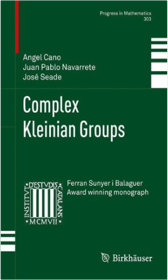


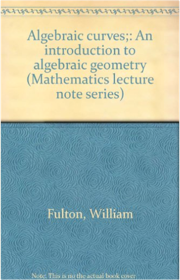

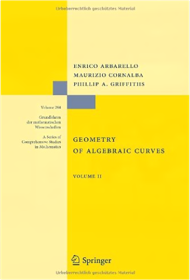
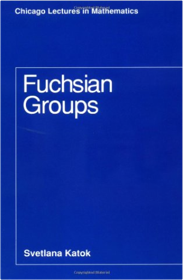


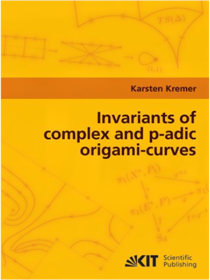


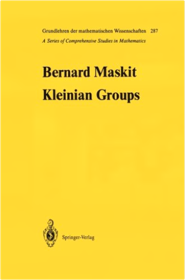
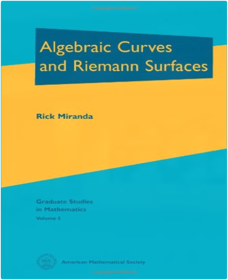

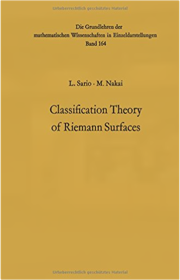
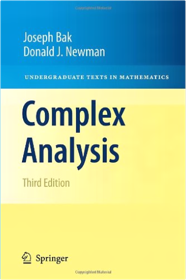
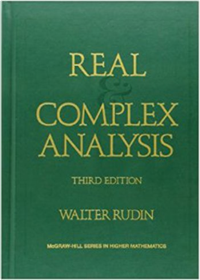
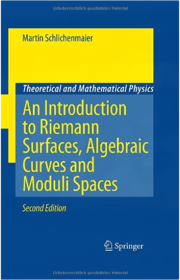
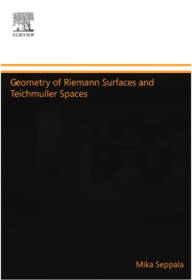
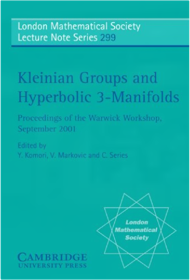

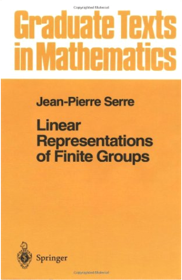
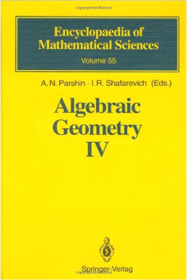




 Made with Delicious Library
Made with Delicious Library